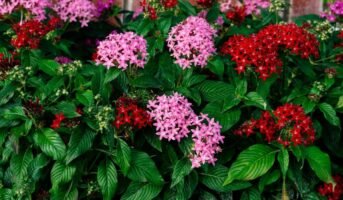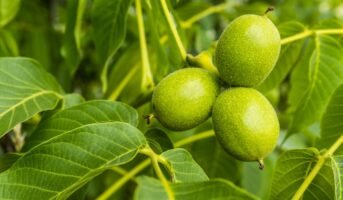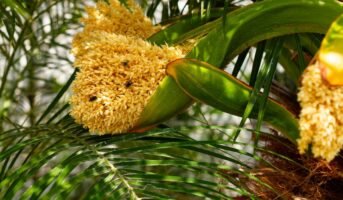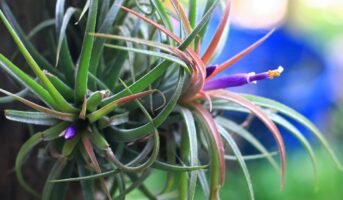The annual plant Erigeron Canadensis is also known as horseweed or Conyza Canadensis. It originally hails from the northern parts of the United States. It produces daisy-like blossoms in a rainbow of hues, from orange and pink to white and purple to sunny yellow.
Erigeron flowers can appear anytime between early summer and early fall. The plants can reach a height of 4 to 36 inches. Due to this quality, they are ideal for being used as border or edging plants.

Source: Pinterest
Erigeron Canadensis: Key facts
| Common name | Horseweed, Canadian horseweed, Canadian fleabane, coltstail, marestail, and butterweed. |
| Botanical name | Erigeron Canadensis |
| Family | Asteraceae |
| Growth rate | Medium |
| Soil | Loamy |
| Flowers colour | White, cream/tan |
| Flower bloom time | Summer |
| Light | Full sun |
Erigeron Canadensis: How to grow?
- After the flowers have faded, the seeds can be collected directly from the plant.
- If bristly seeds develop, just put a plastic bag over them until they’re dry.
- After the seeds have dried, you should prune any remaining branches and put them in an envelope for the winter.
- Plan on planting the seeds in a starter tray filled with regular potting soil the following spring.
- Don’t let the soil dry out as the seedlings emerge.
- Plants should be moved to their permanent locations once they develop leaves.
Erigeron Canadensis: Planting and soil
- Although horseweed can grow in a variety of soil types, it thrives in rich, loamy soil.
- Mix equal parts sand, clay, and organic material, or use regular soil that has been improved with some perlite to create loamy soil.
- Unless the plant begins to take over a significant portion of a garden or yard, it is not necessary to transplant it.
- It can rapidly spread and outcompete other vegetation.
- Transplant the plant in the spring, before its rapid growth begins in the summer, to save it.
Erigeron Canadensis: Propagation by cuttings or dividing
- The plant can be divided by cutting off a healthy branch or digging it up and separating it at its roots.
- Dip the cuttings in the hormone used to help them root.
- You can use regular potting soil or the garden bed to plant the divided plants or cuttings.
- Avoid letting the soil fully dry out as the seedlings establish themselves and new growth emerges.
- The seeds can also be planted in the ground.
How to care for Erigeron Canadensis?
- When the flowers have faded, simply cut the plant back to the ground in the fall.
- Light feeding is necessary, and they should be divided every three years to ensure healthy growth.
Erigeron Canadensis: Temperature and sunlight requirement
- When cultivating the plant outside, be sure to give it plenty of sunlight.
- When grown outdoors in a humid climate, it can withstand the afternoon sun.
- If you’re growing it indoors, keep it away from a south or west window that gets a lot of afternoon sun.
Erigeron Canadensis: Watering and fertiliser requirement
- You should water your plants occasionally, but not too often.
- The plant does well in dry conditions.
- The use of fertiliser is unnecessary.
- After a year or two, with or without plant food, the plant should have reached its full height.
- Water the plant only when the lower leaves show signs of wilting in the winter.
Erigeron Canadensis: Pests
- The plants are notorious for attracting spider mites when grown indoors.
- In dry climates, these pests may also attack the plants grown outdoors.

Source: Pinterest
What are the benefits of Erigeron Canadensis?
- Essential oil is found in the plant, but only in trace amounts.
- The oil can be easily extracted from the plant, and its unique properties make it a good candidate for use in creating perfumes with nuanced and exciting scents.
Erigeron Canadensis: Edible uses
- It contains phosphorus and calcium, so it’s a nutritious food.
Erigeron Canadensis: Medicinal benefits
- Crushing the flowers of E. canadensis and putting them up one’s nose is a tried and true method for relieving rhinitis symptoms through sneezing.
- A leaf decoction from this plant is used to cure a sore throat or dysentery.
Erigeron Canadensis: Toxicity
In certain people, skin contact with the plant might result in dermatitis. So, it’s advisable to wear gloves while handling the plant. Also, keep it out of the reach of children and pets.
FAQs
Which animal eats fleabane?
Rabbits and livestock eat this plant when it's young.
Can fleabane leaves be consumed?
Yes, fleabane or Erigeron leaves can be consumed.
Housing News Desk is the news desk of leading online real estate portal, Housing.com. Housing News Desk focuses on a variety of topics such as real estate laws, taxes, current news, property trends, home loans, rentals, décor, green homes, home improvement, etc. The main objective of the news desk, is to cover the real estate sector from the perspective of providing information that is useful to the end-user.
Facebook: https://www.facebook.com/housing.com/
Twitter: https://twitter.com/Housing
Email: [email protected]











